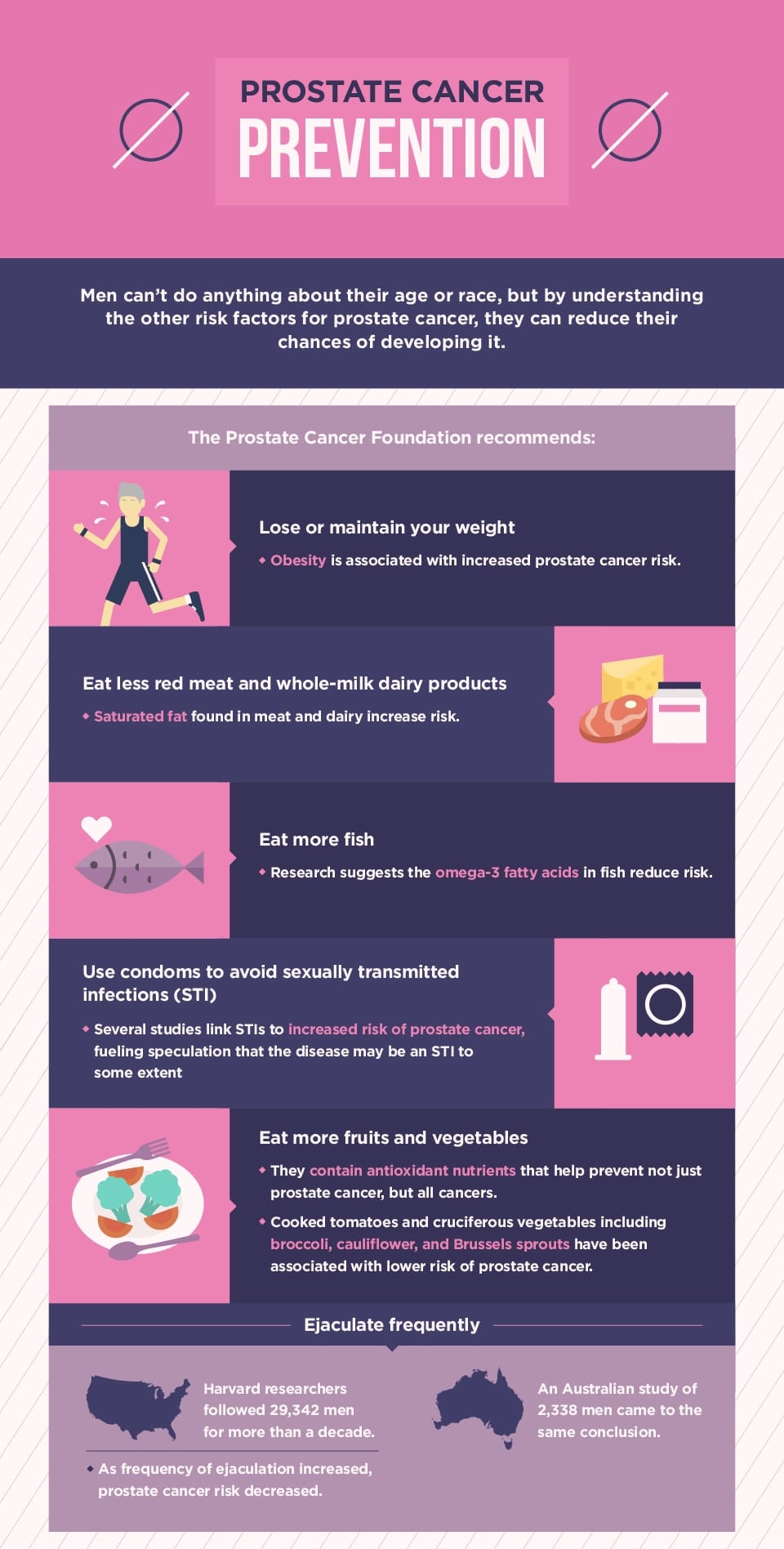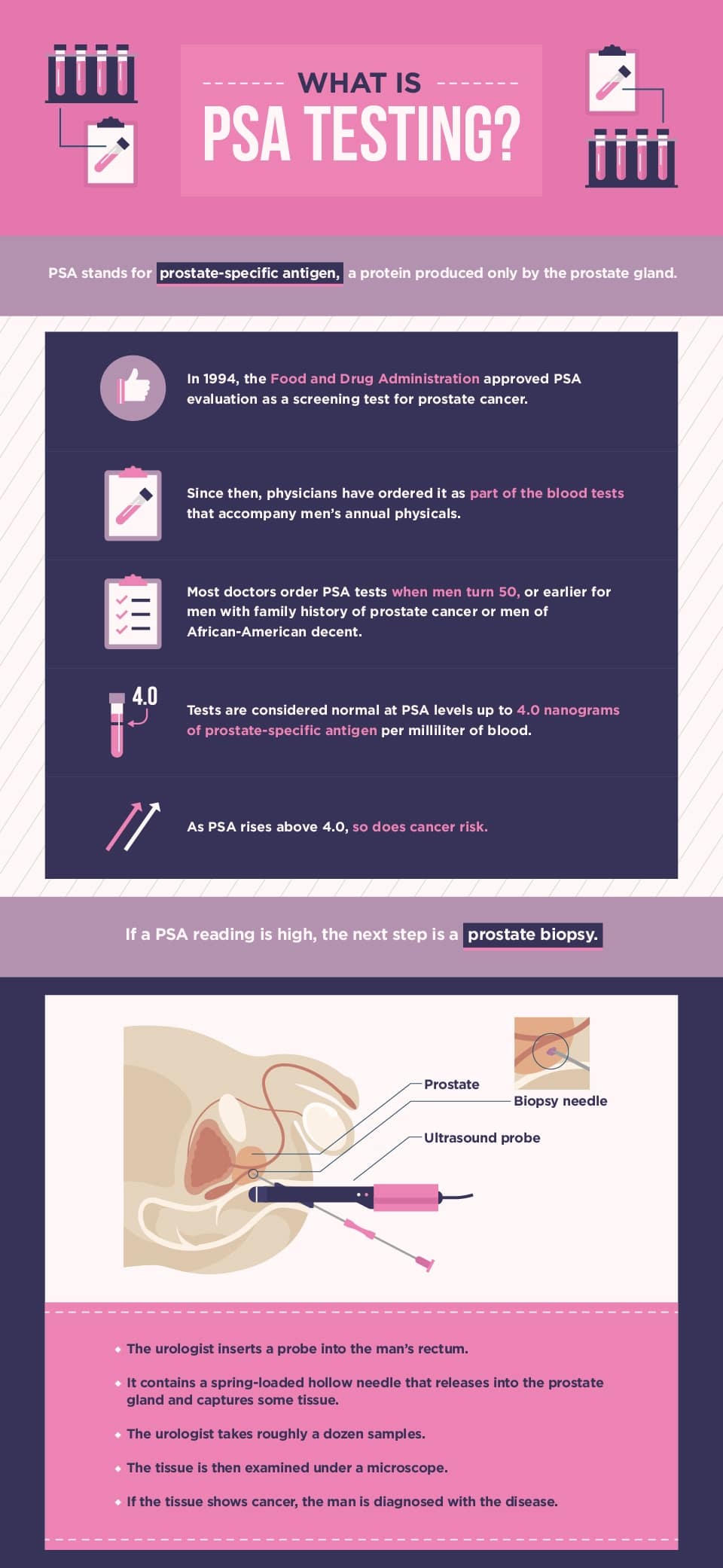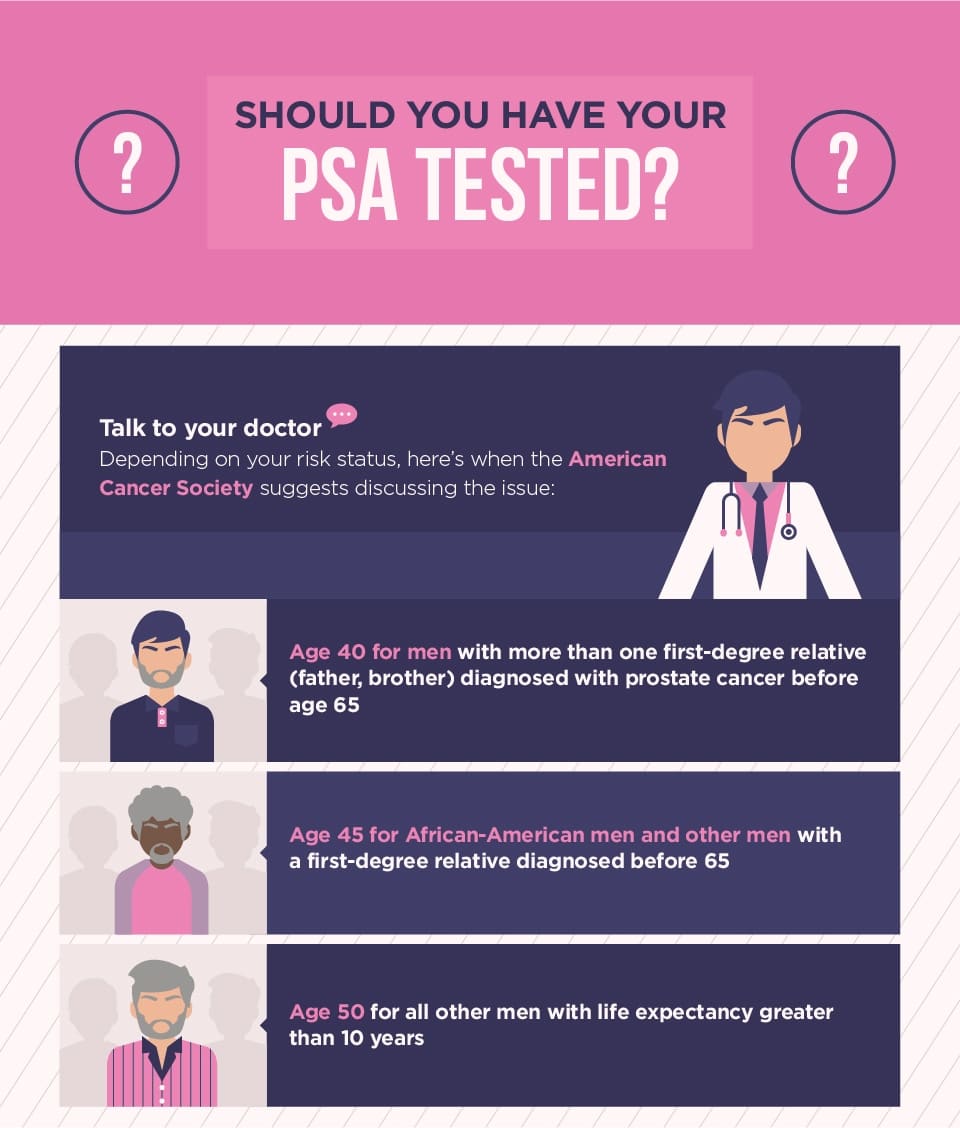The PSA blood test is currently the best available screening test for prostate cancer. But PSA testing is very controversial. Should you get tested? That depends on your risk factors for prostate cancer and how you and your doctor feel about PSA testing. Read on to learn more about your options.
Prostate Cancer Basics

The prostate is a walnut-size gland located deep in the male pelvis, below the bladder and above the rectum. Its primary function is to produce the fluid that transports sperm, the ejaculate. Prostate cancer is a major health issue for older men. The National Cancer Institute projects 181,000 American men will get the disease, and 26,000 will die from it this year alone. For comparison, breast cancer develops in 247,000 women and kills 40,000 annually. But unlike breast cancer, which can appear in women before age 40, very few men develop prostate cancer before 50: The average age at diagnosis is 66.
Prostate cancer is unique. Unlike all other cancers, as men age prostate cancer becomes nearly inevitable. In autopsies of men over age 85, almost 100 percent show prostate cancer, but most of the tumors are indolent (relatively benign), slow growing, and pose no threat to men’s health or longevity. Doctors often say, “Some old men die from prostate cancer, but all old men die with it.” Unfortunately, there’s no reliable way to distinguish indolent prostate cancers from life-threatening ones.
If detected early, prostate cancer is very treatable. In fact, more than 90 percent of men survive at least five years after diagnosis, and most live much longer. Currently, PSA testing is the foundation of early detection.
How PSA Testing Works

PSA stands for prostate-specific antigen, a protein produced only by the gland. Since 1994, when the Food and Drug Administration approved PSA evaluation as a screening test for prostate cancer, physicians have typically ordered it as part of the battery of blood tests that accompany annual check-ups. Most doctors order PSA tests when men turn 50, or earlier for men with family histories of the disease or for African-American men who are at greater risk. The same blood sample drawn to test for cholesterol can be used to gauge PSA. Tests are considered normal at PSA levels up to 4.0 nanograms of prostate-specific antigen per milliliter of blood (ng/mL). As PSA rises above 4.0, so too does the risk of cancer.
If a PSA reading is high, the next step is a prostate biopsy. This involves taking samples of prostate tissue and examining them under a microscope to see if any cells are cancerous. For prostate biopsies, urologists insert a probe into the man’s rectum. (The probe is about the size of a cherry, but feels larger.) It contains a spring-loaded hollow needle. The urologist presses a button that releases a needle into the gland and captures some tissue. The doctor takes roughly a dozen or more samples. If the tissue shows cancer, the man is diagnosed with the disease.
Why PSA Testing Is Controversial

A good screening test reliably detects the target illness, and if the test indicates illness, treatment begins. Unfortunately, PSA testing meets neither of these two criteria. PSA tests do not reliably detect prostate cancer. Men with prostate cancer have PSAs below 4.0 (false negative), and high PSAs do not necessarily indicate cancer (false positive). There are several common non-cancer causes of elevated PSA including:
- Sexual activity (partner or solo)
- Age-related prostate enlargement
- Infections (prostatitis or urinary tract infection)
- Sitting for long periods (for example, long-haul truck drivers)
Because high PSAs cannot distinguish between cancer and other factors, many men—hundreds of thousands a year—wind up with unnecessary biopsies that are invasive, costly, and unpleasant. If biopsies find cancer, there’s no way to know if the disease is indolent or life-threatening. But when doctors say, “You have prostate cancer,” most men fear for their lives and opt for treatment even though the disease is often indolent and treatment is unnecessary.
There are two approaches to treating prostate cancer: surgical removal of the gland or radiation, either from a source outside the body in the form of an external beam or from radioactive pellets, known as seeds or brachytherapy, inserted into the gland. All treatments are equally effective, but they all cause side effects including persistent urinary incontinence and erectile dysfunction (ED).
Finally, many studies agree that PSA testing saves few lives.
- In 731 men with early-stage prostate cancer, University of Minnesota researchers either removed the gland by way of radical prostatectomy or did nothing (watchful waiting). After 12 years, the treated men’s prostate cancer death rate was only 3 percent less than those who were not treated, a statistically insignificant difference.
- Dutch researchers tested PSAs in 91,000 men regularly while 91,000 others were not tested. After nine years, the prostate cancer death rate was slightly lower in the tested group, but screening resulted in a great deal of over-diagnosis and over-treatment, with thousands of men suffering subsequent lifelong incontinence and ED.
- Researchers with the National Cancer Institute recruited 76,685 men; half had regular PSA tests while half did not. After 10 years, the tested group was much more likely to be diagnosed with prostate cancer and treated for it, but the two groups’ prostate cancer death rates were identical.
Based on these studies and others, the U.S. Preventive Services Task Force (USPSTF), an influential expert panel that advises the Department of Health and Human Services on screening tests, estimated that for every 1,000 men over 55 who get regular PSAs for a decade (which totals 10,000 PSA tests):
- At most, one prostate cancer death would be prevented
- 100 to 120 men would have false-positive results leading to biopsies
- About one-third of those who were biopsied would experience bothersome side effects
- 110 men would be diagnosed with prostate cancer, and many would suffer ED and incontinence
As a result of these findings, the USPSTF recommended against routine PSA testing, asserting that the financial and human costs outweigh the benefits. The American Urological Association, a big promoter of PSA testing, initially argued against the decision but has since softened its position, saying PSA testing should depend on men’s “values and preferences.” Of course, most men just do what their doctors recommend, and most doctors continue to order annual PSA testing, fearing lawsuits for failure to diagnose cancer.
Since the USPSTF recommendation against routine PSA testing, two things have happened: rates of PSA testing have declined a little, and treatment of diagnosed prostate cancer has shifted dramatically away from surgery or radiation to watchful waiting, with treatment only if cancer spreads beyond the gland. Five years ago, the vast majority of men diagnosed with prostate cancer opted for treatment. Today, almost half choose watchful waiting.
Back in 1970, researcher Richard Ablin, Ph.D., discovered the prostate-specific antigen. But Ablin has become an outspoken critic of PSA testing. He himself does not get tested, saying that the costs outweigh the benefits. His book The Great Prostate Hoax calls PSA testing “a disaster.”
What’s a Man To Do?
When you talk to your doctor, review your risk status. If you’re not African-American and have no family history, ask if PSA testing is prudent for you. Think about what your doctor says, then decide for yourself.

San Francisco health and sexuality journalist Michael Castleman writes the “All About Sex: blog on PsychologyToday.com and publishes GreatSexGuidance.com where he provides free answers to sex questions from people of all ages and erotic inclinations.





